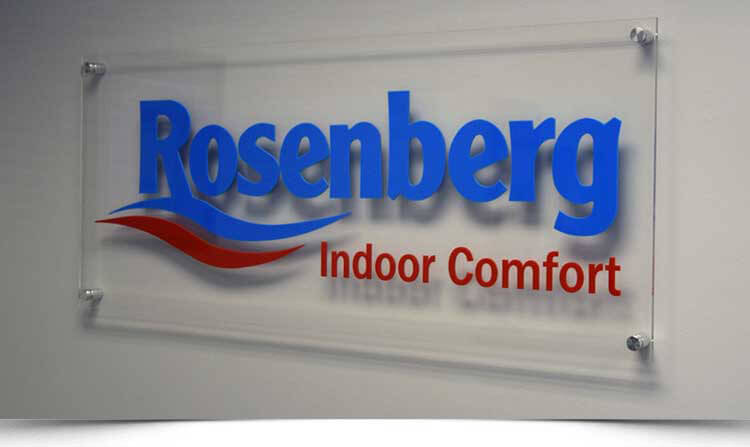-
HVAC Systems and How They Work
How do Air Conditioners work and why is this important?
The HVAC system in your home is an investment and knowing the basics is an excellent way to avoid costly mistakes. Proper sizing, selection, installation and maintenance of your air conditioning system will establish cost-effective operation and lower energy costs.The Basics of A/C: Air conditioners employ the same operating principles and basic components as your home refrigerator. Warm air from the room is sucked in through a grille at the base of the machine. The air flows over some chiller pipes through which a coolant fluid is circulating. This part of the machine works just like the chiller cabinet in a refrigerator. It cools down the incoming air and a dehumidifier removes any excess moisture. The air then flows over a heating element (similar to the one in a fan heater). A fan at the top blasts the air back through another grille into the room. If the heating element is turned down, the air re-entering the room is much cooler, so the room gradually cools down. Meanwhile, coolant (a volatile liquid that evaporates easily) flows through the chiller pipes, turns from a cool liquid into a cool gas, and carries the heat from inside the room to the outside of the building.
What happens to the heat? In the unit outside the building, there are lots of metal plates that dissipate the heat into the atmosphere. An electric fan blows air past them to accelerate the process. Over time, the heat inside the building gradually pumps away into the outside air.
Different Types of Air Conditioners:
1) Room Air Conditioners
Room air conditioners cool specific rooms rather than the entire home. Because they provide cooling only where it’s needed, room air conditioners are less expensive to operate than central units, even though their efficiency is generally lower than that of central air conditioners.2) Self Contained Package Unit
In a self contained air conditioner unit, the evaporator, condenser, and compressor are all located in one cabinet, which usually is placed on a concrete slab next to the house’s foundation. This type of air conditioner is also used for small commercial buildings. Air supply and return ducts come from indoors through the home’s exterior wall or roof to connect with the air conditioning unit, and often include electric heating coils or a natural gas furnace. This combination of air conditioner and central heater eliminates the need for a separate furnace indoors.3) Split-system Air Conditioners
In a split-system central air conditioner, an outdoor metal cabinet contains the condenser and compressor, and an indoor cabinet contains the evaporator. In many split-system air conditioners, this indoor cabinet also contains a furnace or the indoor part of a heat pump. The air conditioner’s evaporator coil is installed in the cabinet or main supply duct of this furnace or heat pump. If your home already has a furnace but no air conditioner, a split-system is the most economical central air conditioner to install. What is a SEER Rating? -
SEER Ratings and What They Mean
A SEER (Seasonal Energy Efficiency Rating) is the rating and performance standards that have been developed by the U.S. government and equipment manufacturers to produce an energy consumption rating that is easily understand by consumers. It has a universal formula and conditioning that can be applied to all units and compensates for varying weather conditions.
Each air conditioner has an energy-efficiency rating that lists how many Btu per hour are removed for each watt of power it draws. For central air conditioners, it is the Seasonal Energy Efficiency Ratio, or SEER. For room air conditioners, this efficiency rating is the Energy Efficiency Ratio, or EER. These ratings are posted on an Energy Guide Label, which must be attached to all new air conditioners sold.
To put it simply, the lower the SEER rating of your system, the more energy (electricity) is required to produce the desired effect.
An example:
SEER OF “6” produces about 6 BTU/hr of cooling, per watt of electricity (6 is a very common rating for older units produced prior to the 1990’s, when energy was relatively inexpensive)
SEER OF “12” produces about 12 BTU/hr of cooling per watt of electricity
This would be double the cooling effect of a 6 SEER unit and the increased efficiency has become more and more important as electricity rates continue to rise.In general, new air conditioners with higher EERs or SEERs will be more expensive. However, the higher initial cost of an energy-efficient model will be repaid to you several times during the course of the equipment life. Your utility company may encourage the purchase of a more efficient air conditioner by rebating some or all of the price difference. Use these helpful tips for saving energy in your home
-
Home Energy Tips
Install shades, awnings or sunscreens on windows facing south and/or west to block summer light. In winter, open shades on sunny days to help warm rooms.
Caulk windows, doors and anywhere air leaks in or out. Avoid caulking around water heater and furnace exhaust pipes.
Set the furnace thermostat at 68 degrees or lower, and the air-conditioner thermostat at 78 degrees or higher. 3 to 5 percent more energy is used for each degree the furnace is set above 68 degrees and for each degree the air conditioner is set below 78 degrees.
If your current air conditioner is old and on its way out replace it with a new air conditioning unit that is ENERGY STAR® labeled with a higher SEER rating.
Wash only full loads in a dishwasher and use the shortest cycle that will get your dishes clean. Turn off the dishwasher before the drying cycle, open the door and let the dishes dry naturally.
Use compact fluorescent lamps. You can lower your lighting bill by converting to energy-efficient low-wattage compact fluorescent lighting and fixtures.
Replace old windows with new high performance dual pane windows.
Clean or replace furnace and air-conditioner filters regularly.
Wrap heating and cooling ducts with duct wrap, or use mastic sealant.
Set the water heater thermostat at 140 degrees or “normal.”
Fix plumbing leaks or dripping faucets. A single dripping hot water faucet can waste 212 gallons of water a month. That not only increases water bills, but also increases the gas or electric bill for heating the water.
Weatherstrip around all of the windows and doors in your home.
Don’t use the fireplace and central heating system at the same time.
Close the damper when the fireplace is not being used.
Keeping your home comfortable is what we do at [company-name].
Helping you maintain your home central heat and air system is important. If you have any questions at all, feel free to call us at (210) 987-5587.




